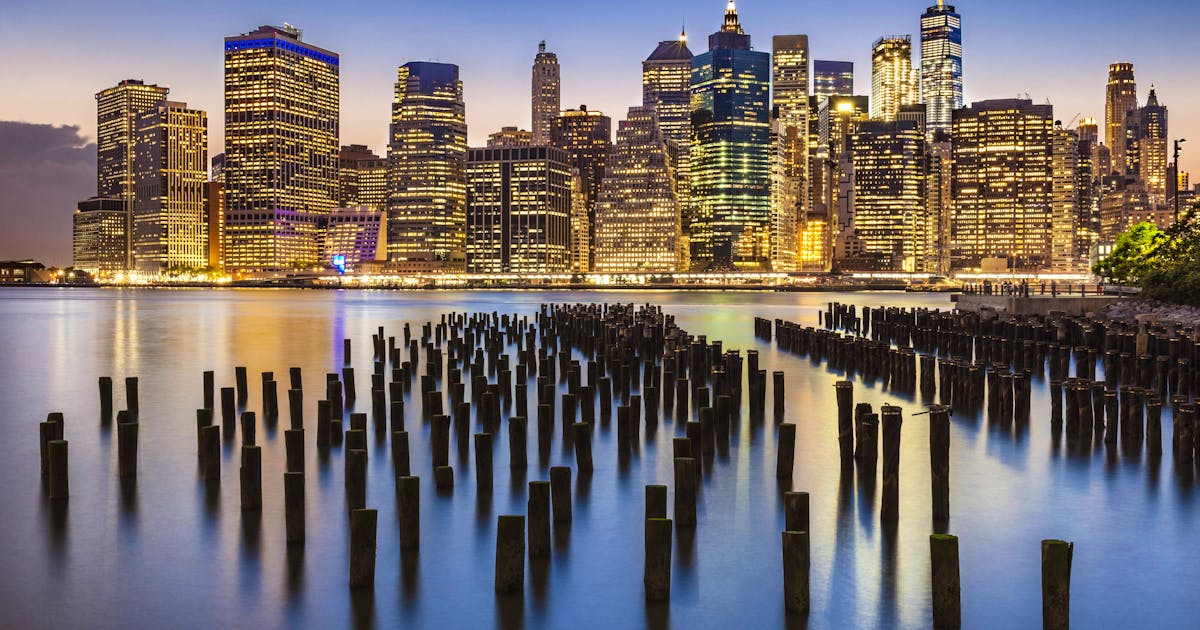The ground under New York gives way because of the building’s sheer mass. At the same time, the sea level is rising and the city is sinking. Other coastal cities do the same as the US capital. But there are solutions.
no time? blue news sums up for you
- According to a study published in May, New York is sinking due to the weight of its buildings. In addition, the sea water level is rising.
- Other coastal cities will also be affected by severe flooding much earlier than previously expected.
- Approaches to a solution lie in a more conscious withdrawal of groundwater, in coastal protection and in switching to floating cities.
According to estimates by researchers from the US Geological Survey (USGS), about 762 million tons of concrete, glass and steel weigh over the 777 square kilometers that make up New York City. There are also 8.5 million residents, their furniture and cars. All that weight is having an extraordinary impact on the site: According to a study published in May, land in New York is sinking by one to two millimeters each year.
This may not sound particularly alarming, but as sea levels rise and cumulatively over several years, subsidence is a problem for the coastal city. But New York is not alone in this. Other coastal cities, whose populations are increasing due to migration and also facing rising sea levels, are in a similar situation.
picture:
Neil Clark / Imago / Robertcharding
It had previously been affected by severe flooding
“In some cities we’re seeing a decrease of a few centimeters a year,” says Stephen de Hondt. BBC. An oceanography professor at the University of Rhode Island in Narragansett uses satellite imagery to measure subsidence rates in 99 coastal cities around the world. “If the process continues at its recent pace, these cities will experience severe flooding much sooner than previously expected,” D’Hondt and colleagues Pei-Chin Wu and Matt Wei wrote in a 2022 study.
Accordingly, parts of Jakarta sink by 2 to 5 centimeters every year. Manila, Chittagong, Karachi and Tianjin are already suffering from infrastructure damage and frequent flooding.
Some degree of this decline occurs naturally, the authors wrote. However, a person can greatly speed up the process – by constructing buildings, extracting groundwater, or extracting oil and gas.
Solutions vary according to the reasons for the settlement
Now, of course, you can just stop building — or at least try to put the heaviest buildings on the most stable ground. That could work in New York. For most of the city stands on a bed of marble, marble and gneiss.
While these rocks exhibit a certain degree of elasticity and fracture, the man-made loamy soils and fillers in lower Manhattan yield relatively larger subsidence. That’s the conclusion of Tom Parsons, a research geophysicist at the USGS’ Center for Marine and Pacific Sciences in California and one of the four authors of the New York study.
Another solution in some places could be to slow groundwater withdrawal, the study authors continue. They warn that increasing urbanization will increase the amount of groundwater extraction and will mean more construction.
From dam gates to floating cities
However, the most common approach is to build and maintain flood defenses such as dams, pumping stations, and lock gates. Other useful tools include catchments: large underground tanks that allow rainwater to drain off slowly and in a controlled manner.
Drainage expert Martin Lampley points out in a BBC article that buffer tanks should be combined with natural elements such as ponds, septic tanks and swamps. “The challenges we face today are fundamentally different than when urban sanitation and sanitation systems were introduced,” he says. In other words: the infrastructure is small scale for today’s tasks.
Ultimately, as is often the case, the more dire the situation, the more creative the solutions. In 2019, for example, the United Nations organized a discussion round in which floating cities in the form of floating structures were considered.

“Tv specialist. Friendly web geek. Food scholar. Extreme coffee junkie.”





More Stories
For the first time, 30% of global production comes from renewable energy sources
Trump Impeachment: Judge Threatens – Keep Your Mouth Shut Or Go to Jail
A Zurich High School student doesn't read any of his books – and he's at the top of his grades!